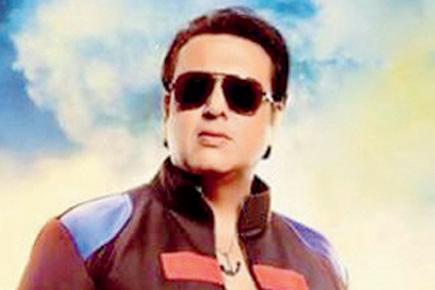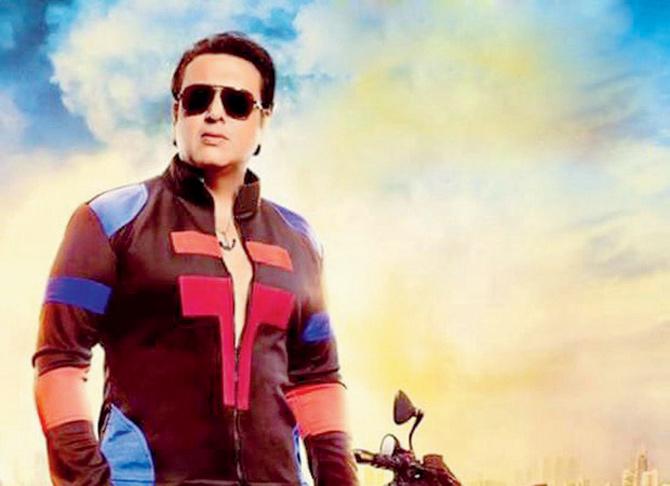Why we totally admired and adored this rare combination of a charismatic star, and a robust comedian on screen, back in the '90s


A still from Govinda's latest comeback Aa Gaya Hero
ADVERTISEMENT
 If I had my way, I'd derive all my life's lessons from Govinda. Except there was little time when we first met over a decade ago at his Juhu apartment. Since I've been a journalist, actor Govinda's career has only been on a downward spiral. Which is a pity, yes, yet a whole lot better than how the actor would have started out.
If I had my way, I'd derive all my life's lessons from Govinda. Except there was little time when we first met over a decade ago at his Juhu apartment. Since I've been a journalist, actor Govinda's career has only been on a downward spiral. Which is a pity, yes, yet a whole lot better than how the actor would have started out.
In a story of highs and lows that can only be best described through residential addresses in Mumbai, Govinda's family once lived on Bandra's posh Carter Road. His father Arun was an actor, who starred in Aurat-Mehboob Khan's early version of the Oscar-nominated Mother India. As his stars began to fade, Arun had to move to Vile Parle. Eventually, when he lost all his money as a producer, he had to make do with a chawl in Virar, where Govinda was born. This is why Govinda Ahuja is often known as 'Virar ka chokra'.
Why people get over-familiar and call him Chi-Chi annoyed him no end, he told me. As to why people go after him in the first place - writing his career obituaries, taking him to task for turning up late on sets - he said his mom once told him, "Log tumhare peeche padein hain? Matlab tum aage ho (People are after you? Means you're ahead)!" What a lovely line, I thought, as we continued chatting. A gentleman - director of one of Govinda's forthcoming duds-who had actually taken me to his place, was listening to the conversation rather impatiently.
When Govinda left the room briefly, that director started blasting me, since I hadn't asked a single question about his film. I said the interview wasn't over yet. Also, we hadn't agreed on a scripted chat. This got the fellow even more belligerent, and he almost had me by the collar, when Govinda returned to the room.
"Kya baat hai (What's up)?" he asked the director. The director told him what the issue was. Govinda became quiet for a second, and then delivered the stellar line, "Iss duniya mein sab apna bhajiya tal rahein hai. Tu apna bhajiya tal. Aur isko apna bhajiya talne de (Everyone's frying their own pakodas on this planet. You fry yours. Let him fry his)!" It's the sort of pop-philosophy that has held me in good stead.
I'm glad Govinda, that rare combination of charismatic star, and a comedian from the '90s, had put it this well. What was so great about Govinda that we loved him so much? At a time when the affluent, urbane Indians had begun to shun Bollywood - or considered it too crass, low brow, and beneath them to acknowledge their love for Hindi films openly - Govinda stood out for his unpretentious, unapologetic desi swagger, cocking a snook. You couldn't help but notice him. He couldn't care less that his English was no good, rattling off, "Ooh, aaj mera happy burday hai," as a rich man's son in Hero No. 1. We see comedian Kapil Sharma similarly poke fun at his own English, which is just as poor as most of India's. Except, given the language is a marker for class, Kapil, like Govinda, can use it as tool to subvert, and connect with audiences, exuding self-confidence at the same time.
Only someone as comfy in his skin as Govinda could step into the screen always dressed in a rainbow - red pants, yellow shirt, dark glasses - and get away with it. You simply couldn't take your eyes off him while he hammed it up, shot quick repartees, sometimes changed his voice (the 'uncle act' in Haseena Maan Jayegi is a masterpiece), but mostly carry the whole film on his theatrical antics.
Directors who grew up in the '90s realise this about Govinda. Which is why Shaad Ali brings him back as the star attraction in Kill Dil (2014). As do Raj & DK in Happy Ending (2014). Govinda was incidentally the first choice for Rishi Kapoor's role in Zoya Akhtar's Luck By Chance (2009). These movies of course are very different from what he used to do in the '90s. How is it that we could all love his films then, but they'd be hard to sit through if made now? It was the conviction on his and the filmmakers' part. For whatever it's worth, you knew they were delivering what they knew to be the best. We didn't know any better. Given all the exposure, a similar film now would merely be a public declaration that the filmmakers believe the audience is an insulated moron.
The last time I distinctly remember watching Govinda on big screen was in a film called Raja Bhaiya (2003) that had released in theatres without even being completely shot-you see people getting into a discotheque, next scene you see them at a police station, the scene where a fight must've taken place doesn't exist. And I've just returned from his supposed comeback, Aa Gaya Hero, which makes Raja Bhaiya look better. My head hurts. But then again, he's 'taloing' his bhajiya. So what, if we can't bear to watch him do it anymore.
Mayank Shekhar attempts to make sense of mass culture. He tweets @mayankw14. Send your feedback to mailbag@mid-day.com
 Subscribe today by clicking the link and stay updated with the latest news!" Click here!
Subscribe today by clicking the link and stay updated with the latest news!" Click here!






